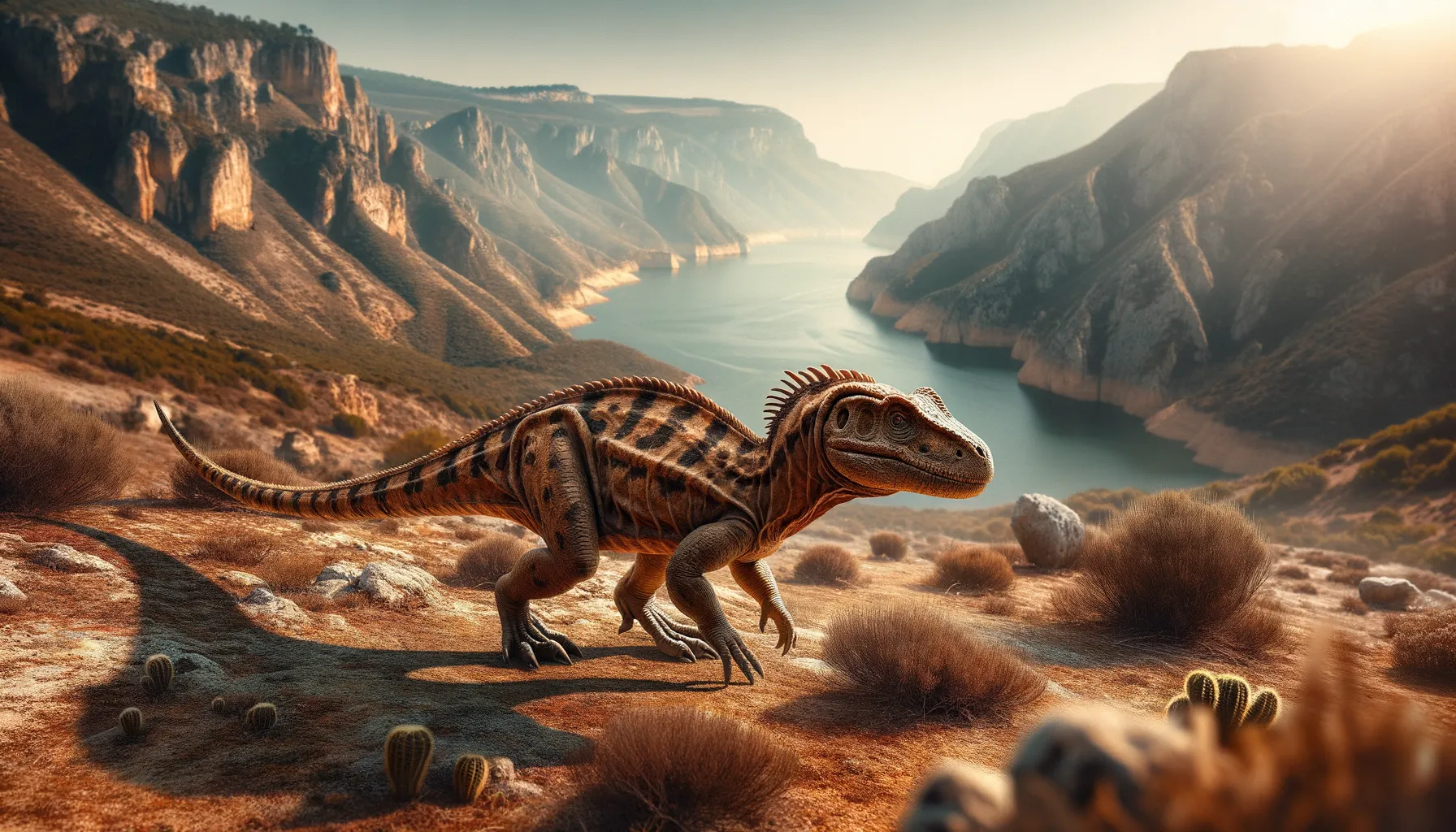
Lisboasaurus
A glimpse into ancient lizard-like life.
Period
Jurassic
Length
Approximately 1 meter in length.
Height
Estimated at around 0.5 meters tall.
Weight
Estimated to weigh around 1-2 kilograms.
Lisboasaurus was a small, lizard-like dinosaur that roamed what is now Portugal during the Jurassic period. Its fossils have intrigued paleontologists due to its unique blend of characteristics, suggesting it might be an early member of a diverse group of small reptiles. Though not much is known about its exact lifestyle, its relatively small size hints at a diet consisting of small prey.
Diet
Lisboasaurus likely fed on small insects, plants, and possibly small vertebrates. Its diet was likely varied, depending on availability in its environment.
Hunting
As a small reptile, it probably relied on stealth and speed to catch insects. Its hunting behavior might have involved stalking prey in dense vegetation or undergrowth.
Environmental challenges
Lisboasaurus existed in a time of significant ecological changes, with shifting climates impacting available resources. Competition with other small reptiles and larger predators presented constant threats. Adapting to these challenges might have led to its specialized diet and habitat preferences.
Speed
Likely slow-moving due to its small size.
Lifespan
Unknown, typical for small reptiles.
First discovery
First discovered in Portugal during the 1970s.
Fun Facts
- Lisboasaurus is named after Lisbon, the capital city of Portugal, where its remains were first discovered.
- Despite its name suggesting it was a dinosaur, Lisboasaurus is actually a prehistoric reptile more closely related to lizards.
- The exact classification of Lisboasaurus has been debated, with some scientists considering it a type of early crocodile relative.
- Lisboasaurus lived around 150 million years ago during the Late Jurassic period.
- Fossils of Lisboasaurus have been found in the Lusitanian Basin, an area rich with Jurassic fossils.
- Lisboasaurus was a small reptile, with fossils suggesting it could have been only about a meter long.
Growth and Development
Young Lisboasaurus were probably very vulnerable and relied on camouflage for protection. Growth rates would have exceeded that of larger dinosaurs due to its smaller size and shorter lifespan. It likely reached full size relatively quickly in order to reproduce.
Habitat
Lisboasaurus likely lived in lush, forested areas with plenty of cover. The habitat would have been rich in plant and insect life, offering ample food sources. Its environment would have been humid and warm, typical of the Jurassic period in what is now Europe.
Interaction with other species
Lisboasaurus would have interacted with various small dinosaurs, mammals, and insects. Predators of all sizes would have been a constant danger, so it likely developed behaviors for both avoiding larger predators and competing with other small reptiles. As such, it may have played a critical role in the food chain, both as prey and predator.
Natural lifespan
Its natural lifespan remains unclear but likely wasn't more than a decade.
Reproduction
Lisboasaurus likely laid eggs in concealed, protected environments. Reproduction would have been seasonal, aligning with optimal environmental conditions. Hatchlings would have had to be self-sufficient very quickly, an adaptation seen in many reptilian species.
Social behaviour
It likely exhibited solitary behavior, as is common among small reptiles. However, temporary aggregations might have occurred to exploit abundant resources or during breeding times. Communication would have been minimal, relying perhaps on visual displays.
Fossil locations
Fossil remains of Lisboasaurus have primarily been found in Portugal. These discoveries were crucial in piecing together its classification and ecology. Further findings might be necessary to fully understand its place in the evolutionary tree.
